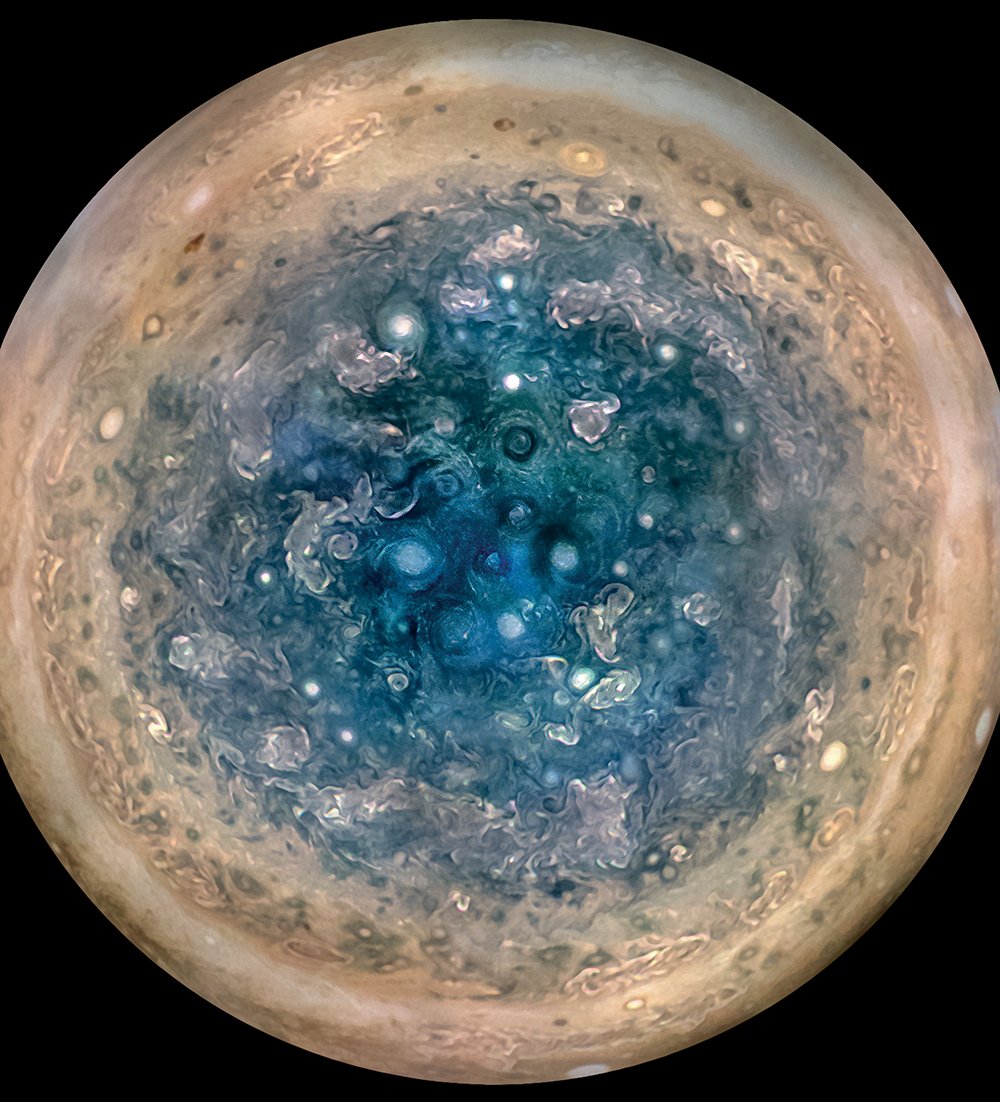“Whole new Jupiter”: NASA releases early Juno mission results

NASA HAS RELEASED early results from its Juno mission to Jupiter, portraying the gas giant as a “complex, gigantic turbulent world with Earth-sized polar cyclones, plunging storm systems and a mammoth, lumpy magnetic field.”
Juno entered Jupiter’s orbit on 4 July 2016, offering an unprecedented view of and insights into our Solar System’s largest planet.
“We knew, going in, that Jupiter would throw us some curves, but now that we are here we are finding that Jupiter can throw the heat, as well as knuckleballs and sliders,” said Scott Bolton, Juno principal investigator from the Southwest Research Institute in San Antonio, USA.
“There is so much going on here that we didn’t expect that we have had to take a step back and begin to rethink of this as a whole new Jupiter,” he said.
Images sent back by the spacecraft’s imager, JunoCam, have shown that both of Jupiter’s poles are covered in “swirling storms” up to 1000km in diameter that are densely clustered and rubbing together.

Jupiter’s south pole, as seen by NASA’s Juno spacecraft from an altitude of 52,000km. The oval features are cyclones, up to 1000km in diameter. (Credits: NASA/JPL-Caltech/SwRI/MSSS/Betsy Asher Hall/Gervasio Robles)
“We’re puzzled as to how they could be formed, how stable the configuration is, and why Jupiter’s north pole doesn’t look like the south pole,” said Scott.
“We’re questioning whether this is a dynamic system, and are we seeing just one stage, and over the next year, we’re going to watch it disappear, or is this a stable configuration and these storms are circulating around one another?”
Prior to the Juno mission, it was known that Jupiter had the most intense magnetic field in the Solar System – but early measurements from the Juno mission indicate it’s even stronger than models expected (about 10 times stronger than the strongest magnetic field around Earth), and more irregular in shape.
“Juno is giving us a view of the magnetic field close to Jupiter that we’ve never had before,” said Jack Connerney, Juno deputy principal investigator and the lead for the mission’s magnetic field investigation at NASA’s Goddard Space Flight Center in Greenbelt, Maryland.
The results are published in two papers in the journal Science as well as 44 papers in Geophysical Reserach Letters.
Source: NASA
READ MORE:
- NASA releases stunning high-resolution Jupiter image
- There’s still so much to learn by visiting Jupiter
- NASA’s Juno sends first view from Jupiter orbit




